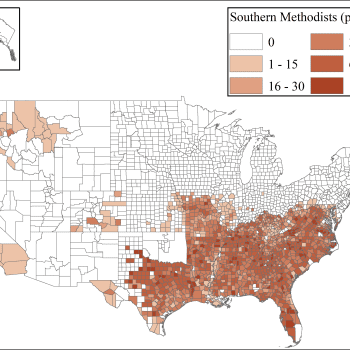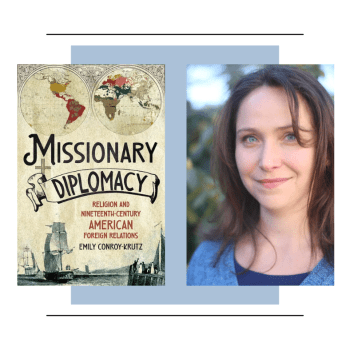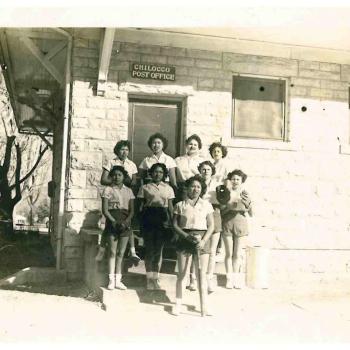Last week I finally got around to listening to a podcast episode I had saved sometime in the past year. Obviously, I’m not a huge podcast devotee. But it was totally worth the wait. This podcast interviewed married evangelical Anglican co-priests Jonathan and Tish Harrison Warren on how and why they had come to support women’s ordination. They had earlier opposed it, having both grown up in the Southern Baptist Church and later joined the Presbyterian Church in America (PCA), neither of which ordain women.
What struck me most was that they made a gender difference argument for women’s ordination, rather than a gender justice argument. In other words, they claimed women and men should both serve as pastors precisely because they are different, rather than because they are similar. This approach made their reflections—particularly on the pastoral needs of lay women—useful to those on both sides of the debate. One of these needs was robust theological education, often reserved for men in denominations that ordain only male pastors.
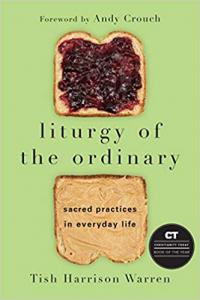 I had bookmarked this podcast because Tish Harrison Warren wrote my favorite book of 2017, Liturgy of the Ordinary, which by interesting coincidence was also Christianity Today’s favorite book of that year! As a rough estimate, I would say that I know of about 25 people who read the book because I recommended it. I liked it that much. So I was not surprised to hear the same reflectiveness and vulnerability that characterize her writing come out in the podcast.
I had bookmarked this podcast because Tish Harrison Warren wrote my favorite book of 2017, Liturgy of the Ordinary, which by interesting coincidence was also Christianity Today’s favorite book of that year! As a rough estimate, I would say that I know of about 25 people who read the book because I recommended it. I liked it that much. So I was not surprised to hear the same reflectiveness and vulnerability that characterize her writing come out in the podcast.
The Warrens modeled for both sides of the debate how to discuss the question in a thorough and gracious way. Like good Anglicans, they considered Scripture, church history, and pastoral arguments. (My church is not Anglican, but I do hold a seminary MA in church history, so I appreciate this approach!) And they were the picture of humility: the Warrens asserted that in their judgment, no one could be more than about 80% sure on the issue. Anyone claiming greater confidence was likely overlooking some really good arguments on the other side.
Indeed, their understanding of the Christian gospel is summed up by the fact that Tish sought ordination at 80% confidence! As they explained, it would be just as much a sin to not ordain women if God desires the sexes to pastor together as it would be to ordain women if God desires only men to serve in that role. So there is no side of caution to err on. Whatever our convictions, we must pursue the good in faith, rather than seeking only to avoid the bad. And we must do so with humility and openness to having our minds changed, dependent on God for grace if we are mistaken.

The Warrens ranged widely over Scripture and church history in their story of how they reached their convictions, but I want to zoom in on their pastoral argument. In the Warren’s parish, both male and female priests serve both male and female parishioners. Indeed, one of their chief theological underpinnings for women and men serving together in ministry is that Genesis indicates that it is male and female together that image God.
But Tish recounted how many more women sought her out for confession and counseling than sought out the male priests in her parish. She noted that in congregations that don’t ordain women, men experiencing sensitive relational or sexual struggles can seek out a male pastor. Likewise, women experiencing sensitive relational or sexual struggles can seek out…a male pastor.
Now many churches with only male pastors do actually offer alternatives. Often women can seek out women’s ministry leaders or pastor’s wives. Some churches have female Bible teachers or small group leaders. All churches have some respected older women. But frequently none of these women have the same level of theological education or counseling training as the church’s pastors. They are also not as directly accountable to the church or denomination’s leadership. So women are too often getting the “B team.”
In other words, there are some forms of ministry that only theologically educated women formally commissioned by the church can do. So churches, regardless of their views on women pastors, need to encourage women to pursue the same level of theological and pastoral training as men. And they need to give them formal positions of ministry within the church in which to serve.
This is not a new argument. It was, in fact, the engine behind much of the expansion of the missions movement of the late nineteenth century.
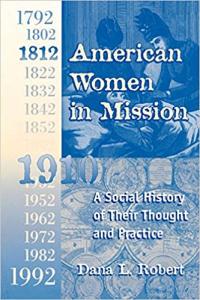 This connection struck me because the same week I listened to the podcast, I was also re-reading Dana Robert’s masterful book American Women in Mission. Robert recounts how in the late 1800s, women across most American denominations began forming independent missions agencies to support sending single women missionaries abroad—when doing so was not yet a priority for the denominations’ male-led missions agencies.
This connection struck me because the same week I listened to the podcast, I was also re-reading Dana Robert’s masterful book American Women in Mission. Robert recounts how in the late 1800s, women across most American denominations began forming independent missions agencies to support sending single women missionaries abroad—when doing so was not yet a priority for the denominations’ male-led missions agencies.
The movement arose in response to reports by missionary wives in India and China. These women observed that upper-class Indian and Chinese women were kept in seclusion from men and could therefore only be reached by female missionaries. Married female missionaries could not do this work full-time because of their family responsibilities, so they called for single women to join them on the mission field.
A second factor also drove the rise in “woman’s work for woman” as a missions philosophy. Indian and Chinese culture contained several practices that Western missionaries perceived to be oppressive to women. From our present-day perspective, nineteenth-century missionaries were overly imperialistic, which is to say they sought to export aspects of American culture that we would not consider intrinsic to Christianity. But there were also areas where we would agree with their critique: these cultures did not provide nearly as much education for women as for men, kept upper-class women in seclusion, and at times practiced widow burning (India) and the foot-binding of elite women that rendered walking difficult and painful (China).
American female missionaries and the American women who supported them identified as women with the plight of the women in these cultures. Female missionaries therefore saw themselves as simultaneously bringing the gospel to these women and improving their social conditions in the name of Christ—redeeming both soul and body. Most denominations would not ordain women as pastors, but several began ordaining women as deaconesses set apart for this combination of evangelism and social work, whether abroad or at home among the urban poor.
The vast majority of women missionaries were teachers or doctors, both in order to have a useful skill that would gain them entrance to sequestered women and in order to have a skill with which to improve women’s lives. Robert notes that, in light of these goals, missions agencies began to require women to have a college degree and some additional specialized training for missions. To make this level of preparation possible, women had to establish training schools for female missionaries and deaconesses because most theological seminaries would not admit them.
This approach to missions flourished for many years because it worked: women in these cultures converted to faith in Christ, their social and physical conditions improved, and they often went on to serve as teachers or doctors themselves. Theologically trained women given official ministry positions were uniquely able to minister to the souls and bodies of other women, who in turn did the same.
We need more of this today—both in churches that ordain women and in churches that don’t.








